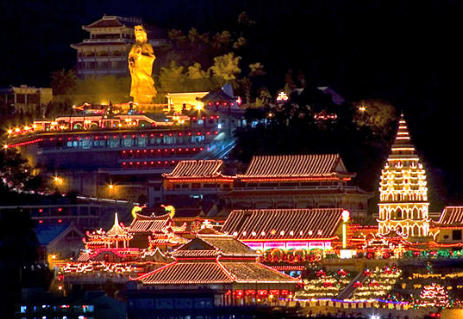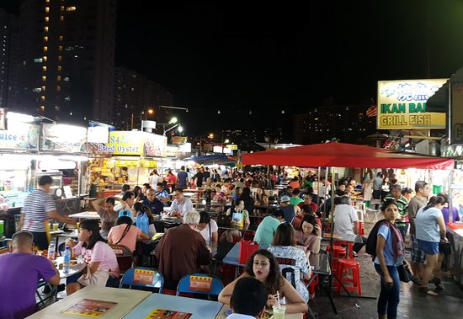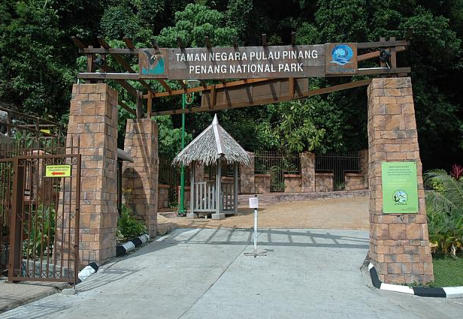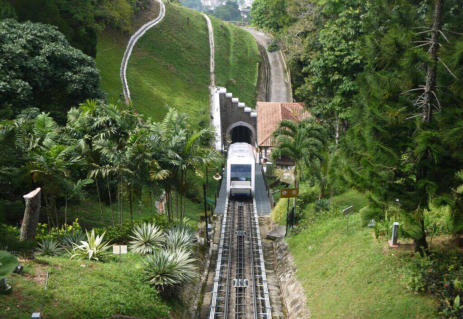PENANG

Navigation
Contact
Tel: +6012-234 1123
Tel: +6012-332 8303
Whatsapp: +6012-234 1123
Email: info@aerosmart-focus.com
Address
F-11-11, Blok F Kompleks
Permaisuri Q,
Jalan Sri Permaisuri,
Bandar Sri Permaisuri, Cheras
56000, Kuala Lumpur, Malaysia.
© 2019-2023 Aerosmart Focus Sdn Bhd 201401023482 (1099569-A). All Rights Reserved
TRAVEL TIPS
AEROSMART FOCUS SDN BHD
Batu Ferringhi, situated along the coastal road north-west of Georgetown and lined with
a string of international- standard resorts, is the most popular beach in Penang. Soak in
the sun or unwind on the beach while you enjoy a host of aquatic thrills from wind-
surfing to canoeing. For a spine-tingling adventure, try parasailing to enjoy the view of
the beach from the sky. As the sun sets, Batu Ferringhi comes alive with a carnival-like
atmosphere with an open-air bazaar selling anything from ornate curios to enticing
souvenir items. Watch local artisans demonstrate the intricate art of craft-making and
batik- painting. Dubbed the Feringghi Walk, the bazaar offers shoppers a host of
attractions.

Also known as the Temple of Supreme Bliss, Kek Lok Si is said to be the largest Buddhist
temple in Southeast Asia, and arguably one of the most famous in Penang. Located in Air
Itam, the hills in that area (called “He San” or Crane Hill) have traditionally been regarded
as geomantically significant, having all the right “feng shui” for a temple. In fact, they are
extremely popular as a retreat for monks and Taoists striving for immortality. The
temple’s construction began in 1893, inspired by the chief monk of the Goddess of Mercy
Temple at Pitt Street. The Manchu Emperor Guangxu approved of the project, bestowing
a tablet and gift of 70,000 volumes of the Imperial Edition of the Buddhist Sutras. Other
Chinese rulers, such as His Majesty Emperor Kuang Xi and Empress Cixi of the Ching
Dynasty, have been sufficiently impressed with the temple so as to have bestowed the
temple with gifts. The best time to visit Kek Lok Si is during the Chinese New Year
celebrations, when the temple is adorned with thousands of bright hanging lanterns. At
other times, there is still much to see, with prayer halls, pagodas, bell towers and a

If Penang is the food capital of Malaysia, Gurney Drive is arguably the best of Penang on
a plate. The popular seafront promenade exemplifies the colours and atmosphere of
Penang – fun, lively and vibrant. Also known by its Malay name, “Persiaran Gurney”,
Gurney Drive offers delightful street and high-end cuisine. Food courts and open-air
hawker stalls pepper the seaside stretch, offering gastronomic delights well into the
night. Local favourites such as Penang Laksa, Bak Kuk Teh (a herbal stew of pork ribs and
meat), Oh Chien (fried oyster omelette), grilled squid, and nasi lemak make for mouth-
watering meals. The New Gurney Drive Food Court has both a halal and non-halal
section, and is open from 6pm. If you’re craving for something other than hawker food,
try the piping hot dim sum at the Corner Club Restaurant. For weight watchers, the 24-
hour Mr. Pot offers a selection of sandwiches and toast, all-day breakfast sets, healthy
meals and oil-free dishes. Nearby, along Lorong Burma, is the island’s first Burmese
temple. Built in 1803, the Dharmikarama Burmese Temple has striking golden rooftops,

It is the smallest national park in the country with a size of 2,562 hectares. It was gazetted
in 2003 and is home to 46 species of birds such as the stork-billed kingfishers, white-
breasted waterhens and great egrets. A 2000 expedition led by the Malaysian Nature
Society recorded 417 flora and 143 fauna species. Before the area was designated as a
national park, the locals knew it as Pantai Acheh Forest Reserve. Some of the activities
carried out are fishing, swimming and hiking. The pure, sandy stretch of Pantai Kerachut
is also a favourite nesting place of Green turtles from April to August, and the Olive Ridley
from September to February. The turtle hatchery set up in Pantai Kerachut in 1995 is now
managed by the State Fisheries Department along with the Department of Wildlife and
National Parks (Perhilitan) and the Forestry Department. They also manage the upkeep of
the park, which is in pristine conditions. Some of the best hardwood trees can be found
here, especially from the shorea species, such as Meranti and Merawan Baru. In fact, the
area is the only known place in Penang where the red, paper-like barked Gelam trees

Penang Hill is one of Penang island’s featured attractions. It is the oldest British hill
station in Southeast Asia, dated late 1700’s. Well known for its cool and fresh climate
from the tropical heat of George Town, it is a popular holiday retreat to the locals as well
as tourists. Penang Hill is also known for its magnificently spectacular panoramic view of
George Town, the mainland, the Penang Bridge and the Straits of Malacca which can be
viewed from the Penang Hill Summit. The hill, also known as Bukit Bendera or Flagstaff
Hill, is 833m (2,723 ft) above sea level and stands out prominently from the lowlands as a
hilly and forested area.
The hilltop can be reached with funicular train service. The funicular track stretches a
distance of 1,996 metres (1.99km) from lower to Upper Station which is the longest in
Asia. Penang Hill funicular tunnel, at 79m (258ft) long and 10feet (3.0m) wide with a
steepness of 27.9degree, is the steepest tunnel track in the world.
tortoise pond topping the list.
Its main draw is the striking seven-storey Pagoda of Rama VI (Pagoda of 10,000 Buddhas), completed in 1930. Boasting 10,000 alabaster and bronze statues of
Buddha, its design symbolises the harmony between Mahayana and Theravada Buddhism, marrying a Chinese octagonal base with a middle tier of Thai design,
topped by a Burmese crown. One can climb to the top of the pagoda via a steep flight of stairs and be rewarded with a great view of Penang. The 30.2m bronze
statue of Kuan Yin, the Goddess of Mercy, is yet another popular highlight.
pagodas, a huge Boddhi tree and a wishing well.
grow. The bio-diversity of the park is also impressive, with 1,000 species of plants including five different species of the Bintangor tree. Besides this, the park is the
only one in Malaysia that contains six different types of habitat a meromictic lake (a lake that occurs seasonally, where there is a distinct layering of waters),
wetlands, mangroves, mudflats, coral reefs and turtle nesting beaches. There are also various plant pitchers, wild orchids and funghi, and medicinal plants.
Scan Now
For Whatsapp Support


















